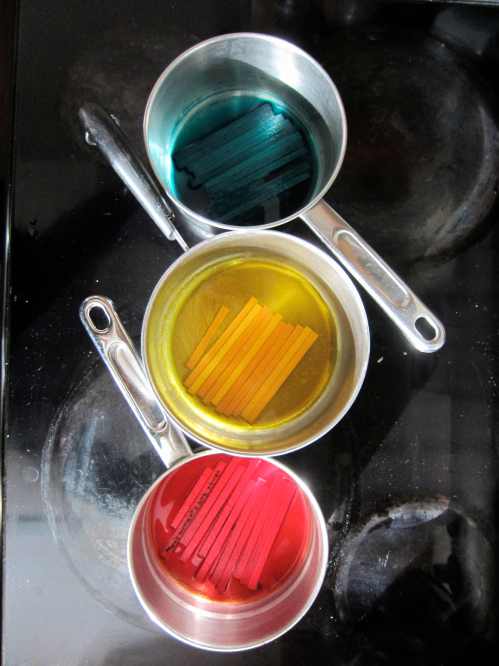This post may seem a bit after the fact seeing as Thanksgiving is over. In my defense, it involves leftovers, super quick roasted nuts perfect for any occasion, and an epiphany: Jazz and Thanksgiving are soul mates.
Jazz by nature is so fluid it resists definition, but I tried anyway. Jazz could be defined as two conflicting cultures finding beauty in each other’s musical traditions, an embrace that results in music new, surprising, and glorious.
Thanksgiving could be defined as two conflicting cultures brought together by their mutual celebration of the harvest bounty (so the story goes).
Solidly rooted North American traditions, both are the result of two cultures in direct competition finding a common ground through art. Through mingling, new culinary and musical legacies were born.
I’m not sure exactly why jazz came into play. I wanted to write about Thanksgiving, but have been singing mostly blues notes as of late. There is so much to be thankful for, but instead of the usual lilting melody, this restless body is composing a cacophony that doesn’t match the love in my life.
Maybe I need to reinterpret my time signature. Just because it is dark when I wake, and dark when I leave work doesn’t mean there is less leisure time. Dark spaces feel smaller, but that’s what flash lights and desk lamps are for.
There is one thing that usually makes me feel better. In the jazz lexicon it would be called improvisation through syncopation; being open to new melodies (aka a dish) by using an unexpected deviation (combining ingredients not usually combined).
I set out on a culinary mission last weekend with that very thought in mind. Winter squash and nuts were the riff (repeated refrain). My plan was to make Maple Chipotle Nuts, and my very first homemade pumpkin pie. I began by making the nuts, and roasting and pureeing a sugar pumpkin. As I set out to make a pie the next day, it seemed only natural to make a Maple Chipotle Pumpkin Pie. The real surprise was my latest creation, an Acorn Squash Pumpkin Pie.
Maple Chipotle Nuts is a recipe I adapted from the Sacramento Natural Foods Co-op biweekly ads. I first made them as part of a clean-out-the-freezer project, and have since made them three times in the last week and a half. They are sweet, a little spicy, and seriously addicting.
Maple Chipotle Nuts
1 pound unsalted raw nuts (any mix of pecans, green pumpkin seeds aka pepitas, almonds, walnuts, peanuts)
1 cup maple syrup
¼ cup dark brown sugar
2 teaspoons ground chipotle chili powder
1 teaspoon salt
1 teaspoon ground black pepper
1) Heat oven to 325. Line a rimmed baking sheet with foil.
2) Mix maple syrup and brown sugar in a small microwave safe bowl. Heat in microwave till sugar is dissolved, about 1 minute. Stir in chipotle powder, salt, and pepper.
3) Combine nuts and maple syrup mixture. Stir till evenly coated. Spread nuts on lined baking sheet.
4) Bake 6-7 minutes. Stir, then bake another 6-7 minutes till bubbly. Put nuts in a heat safe bowl and allow to cool, stirring occasionally to break them up.
5) There’s plenty to snack on, sprinkle on a salad with bleu cheese or feta, and make Maple Chipotle Pumpkin Pie.
Maple Chipotle Pumpkin Pie
Even though it was my first time making a pumpkin pie, that didn’t stop me from tweaking the recipe. (Never does!) I got a small sugar pumpkin in my CSA box a couple of weeks ago, and finally got around to doing something with it. My 8 year old loves pumpkin pie, and begged me to make one. I warned her I was going to put nuts on top, but she could take them off. She allowed me to proceed.
You can use any piecrust you like. I used the “No Fear Pie Crust” from Cook’s Country. (This is a subscription website, but this particular recipe is free! Although it might be just be free during the holidays.) I highly recommend it. I took the recipe title for granted, and let my three year old help me make it with great results. Also, it stayed nice and crisp even though it took us a few days to finish the pie.
The filling I used is another free one from Cook’s Country, their “Pumpkin-Praline Pie.” You can click on the link or just follow my simplified instructions:
In a medium saucepan, combine:
15 oz plain pumpkin puree (canned or homemade)
¾ cup dark brown sugar
2 teaspoons cinnamon
1 teaspoon ground ginger
½ teaspoon ground allspice
pinch ground cloves
½ teaspoon salt
1) Once all the filling ingredients are in the pan, turn heat to medium high. Stirring frequently, heat till bubbling and thickened, about 4 minutes.
2) Remove from heat and whisk in 1 cup evaporated milk, 3 eggs and 2 teaspoons vanilla.
To finish the pie:
1) Pour filling into warm piecrust. (The filling is actually a little too much for a 9” pan. Save the leftovers! I’ve got a great use for it down the screen.)
2) Bake at 350 till the filling puffs up, and barely jiggles at the center, about 35 minutes.
3) Top with Maple Chipotle Nuts, then bake another 10 minutes or so until toasty, and you just can’t handle the aroma-torture any longer.
4) Let cool on a wire rack till set, 2 hours or so.
Next time I make this pie, I plan to kick up the spice by putting a little chipotle powder into the filling.
Acorn Squash Pumpkin Pie
So, you may be wondering where the acorn squash comes in. I’ve had this beautiful Carnival acorn squash on my table as a fall decoration for a few weeks. It’s almost too pretty to eat.
But, when I made the piecrust, I realized I didn’t have any pie weights (because they would get used less often than my children ask for a bath). So, I improvised. I used a foil-lined pie tin with half an acorn squash to weigh down the crust and roast it at the same time. I put the other half face down in another pie pan, and essentially killed two birds with one stone.
But wait, there’s more! Once the acorn squash starts to caramelize, and is tender enough for a fork to pierce easily, flip it over and pour the rest of the pumpkin pie filling in the center. Bake another 10-20 minutes until the filling is set. This would be great in a butternut, or any other squash you like to prepare on the sweeter side.
Back to the Blues:
Maybe I need to take this syncopation thing more seriously. One way of making an unexpected deviation in music is with a rest where a stress is expected. Slowing my tempo makes sense, but seems impossible. Family life means trying to synchronize the rhythms of four people into one composed day, every day. Of course I can stop doing the extras I love (like writing, baking, little things that help me maintain sanity), but I can’t not participate in my family’s song. How do you do it all, or stop trying to do it all?
In jazz, some songs use a call-response format. The lead singer will sing an improvised line or two, and the chorus responds with a refrain. As the lead singer in this scenario calling to you, the chorus, what do you do when you find yourself singing the blues?
 It’s been a few millennia, at least in computer years, since I last posted. I’m sure you are wondering what I’ve been up to, why I haven’t been sharing photos, recipes, etc. The truth is I’ve been off on a spectacularly long tangent, possibly branching off to another tree entirely.
It’s been a few millennia, at least in computer years, since I last posted. I’m sure you are wondering what I’ve been up to, why I haven’t been sharing photos, recipes, etc. The truth is I’ve been off on a spectacularly long tangent, possibly branching off to another tree entirely.



































































